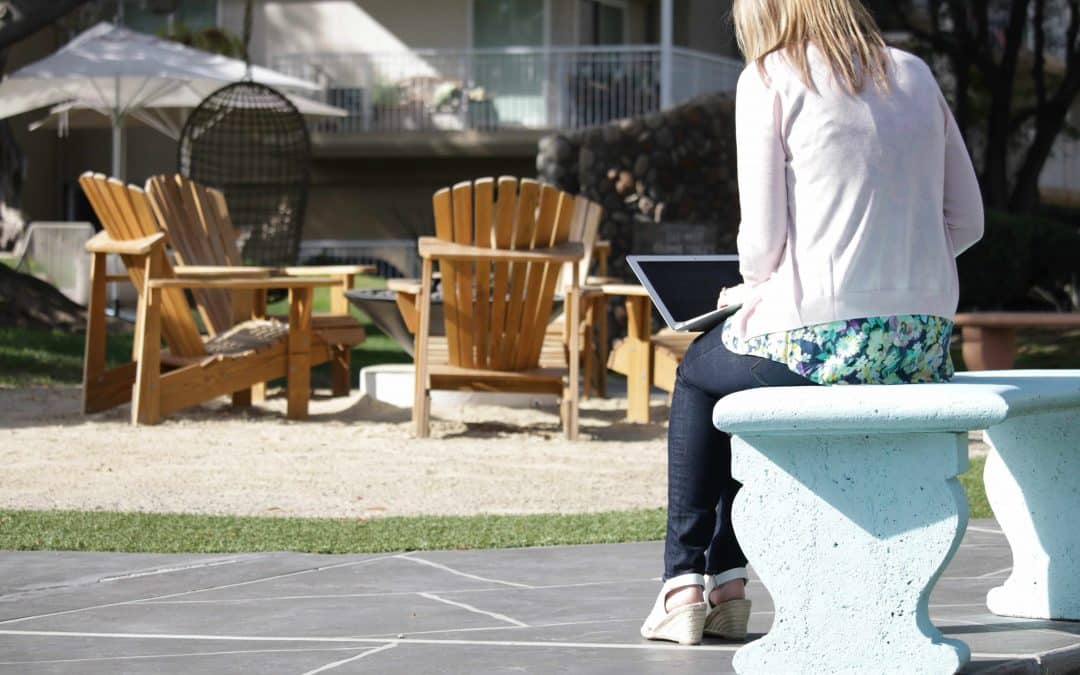So what is a career portfolio? A career portfolio is a support document used to support what your resume claims. The students in my career development class I am teaching have to make a portfolio this week. I also had to make a portfolio in college, too. But, I don’t think this is a requirement for most because I know very few people who have them.
Do you? Well, I HIGHLY recommend that you create one, so that is why I am writing a post about it today!
Here are a few ways I have used my career portfolio:
1. Organization:
When I was in college, I was required to create a career portfolio. This portfolio was a physical binder where I included things that I could use during upcoming interviews. I kept my resume and transcript in there my portfolio. The best thing about starting a portfolio in college was that I consolidated everything and had it in one place. You would be amazed how after college you just lose all the things you have done (especially when you started college you had floppy disks… embarrassing). The portfolio allowed me to save work samples and projects that I did in college that I wanted to have in my career portfolio for the long term. It also included my grades and the descriptions of the classes I took.
There was so much stuff I put in that binder that I ended up referencing later on. I even just ran across my 10-year goals and mission statement that I created in college which was awesome to read! (I even put that I wanted to be married, have a few kids, have a summer home and live in a house with a white picket fence…haha! What a vision for only ten years out of college!:) I have a ways to go still….
[RELATED: 3 Job Search Strategies If You Have Limited Time]
2. Interview Backup:
When you are in an interview, and you have your career portfolio handy, you have everything ready in case you get asked a question. Say you get asked a question about some work that you did previously, well in your portfolio you have a copy of that project you did. Let me tell you THIS WORKS! At my current company, we interviewed a candidate who did exactly this and he got hired immediately. We asked him what his Excel proficiency was and he pulled out this binder with excel sheets that he created and explained to us how he created them.
That is the closest you can get to actually demonstrating your proficiency live! Tangible examples of your skills and abilities are powerful weapons!
3. Annual Reviews:
I created my portfolio in college and then changed it to work for me when I started a new job for annual performance reviews. I kept most of the same categories but added a few more to demonstrate that I was meeting all of the competencies at my company. I had the training certificates I did over the last year in my portfolio. I added in emails where I got feedback from the client saying “thank you!” to demonstrate my hard work for the client. I included my self-assessment and my sources of input to get further feedback about my performance. I included everything in there for the person that was going to assess me.
This was such a nice way for the other person to keep everything handy and organized and they always really appreciated it. Not only was I making it easy for them, but I was showing the competencies I was meeting just by having that binder and keeping everything organized. I like to think that was a huge reason that my promotions came very quickly when I first started working at that company. If there is someone else assessing you, make it easy on them and they will be happy to say and write good things about you!
What should you include in your portfolio?
Here is a list of things that can be included. Feel free to change this to match your career history and experience! You are lucky; I am not grading you, so you won’t lose points if you miss any of these!
-
Title page
-
Table of contents
-
Personal Mission Statement
-
Your Elevator Speech
-
Course descriptions
-
Academy history and transcript
-
Resume
-
Professional development and training certificates
-
Recommendations
-
Reference List
-
Awards and Accomplishments
-
Volunteer history
-
Professional Affiliations
-
1,2 and five-year goals
-
Work samples–Proposals, presentations, manuals, employer evaluations (Make sure that none of your previous work samples are confidential if you are taking it to another company!)
-
A list of your skills or an online personality assessment
-
A statement of originality – this is a statement that may say that the portfolio is your original work and cannot be copied without permission
One thing to remember is that your portfolio is not going to be huge when you are just first starting it. The goal is just to create it and have a place to put all the information that you gather over the next couple of years.
Here’s how to make the portfolio
Before you start, think about what you want your portfolio to say about you. What is the story that you want to come out when someone looks at it? Remind yourself of the end goal and the impression you want your portfolio to give before you even start creating it. What is the goal of your portfolio?
I HIGHLY recommend making a physical portfolio just to keep all your records in one place and to be able to take it with you during interviews. But, if you think I am old school, feel free to make an online portfolio. You can you Microsoft Word or Microsoft PowerPoint, or you can create your own website as your portfolio! Just try to include as many of the above sections as possible.
Make sure it is formatted professionally! Remember that this is an extension of your resume so you have to be honest and have NO grammar mistakes.
Make it attractive and include titles, headings and images that are attractive to the eye. Include graphic images such as photos, maps, charts or other visual aids.
Supplies you need for a physical portfolio:
-
Three ring binder
-
Plastic sheet protectors for important documents
-
Table of content tabs
-
Pouches for additional samples that aren’t documents such as CDs, photos or other bulky items
First, collect everything that you want to include in your portfolio and print everything out. Then organize it into sections to create the table of contents. Then put it all together and insert the materials in the binder in the correct tabs. Proofread the portfolio carefully and review it with a friend or family member to get their feedback and to get used to talking about yourself! You will be doing it in an interview very soon!
Remember that less is more and you don’t want to present too much information. Don’t clutter your portfolio and your message. Make sure that you keep formatting consistent throughout the portfolio.
How to use your portfolio in an interview
As soon as you’re comfortable in an interview discussion, mention that you brought along some materials or samples of your work for review. Use it to demonstrate your skills and abilities that you are promoting in the interview.
Don’t push it too much but if they look interested and want to see it, break it out! This gives you a great way to present yourself and show work samples as a demonstration. Whatever you do, don’t be ashamed or embarrassed to bring it out. Be proud of the work that you put into it because it is just evidence that shows how you are the perfect fit for the job. Although you should always reference your portfolio and have it available for the interviewer to look at, you should never force anyone to look at it.
My favorite part of the portfolio is that is a great way to reflect back on some of your best work and bring that positivity to your next company or opportunity. Keep updating it as you continue in your career and you will be so happy you did!! You will thank me later!:)
“Every job is a self-portrait of the person who does it. Autograph your work with excellence.” -anonymous
Ok, class dismissed! Now go start creating your career portfolio!
Do you have a career portfolio?




